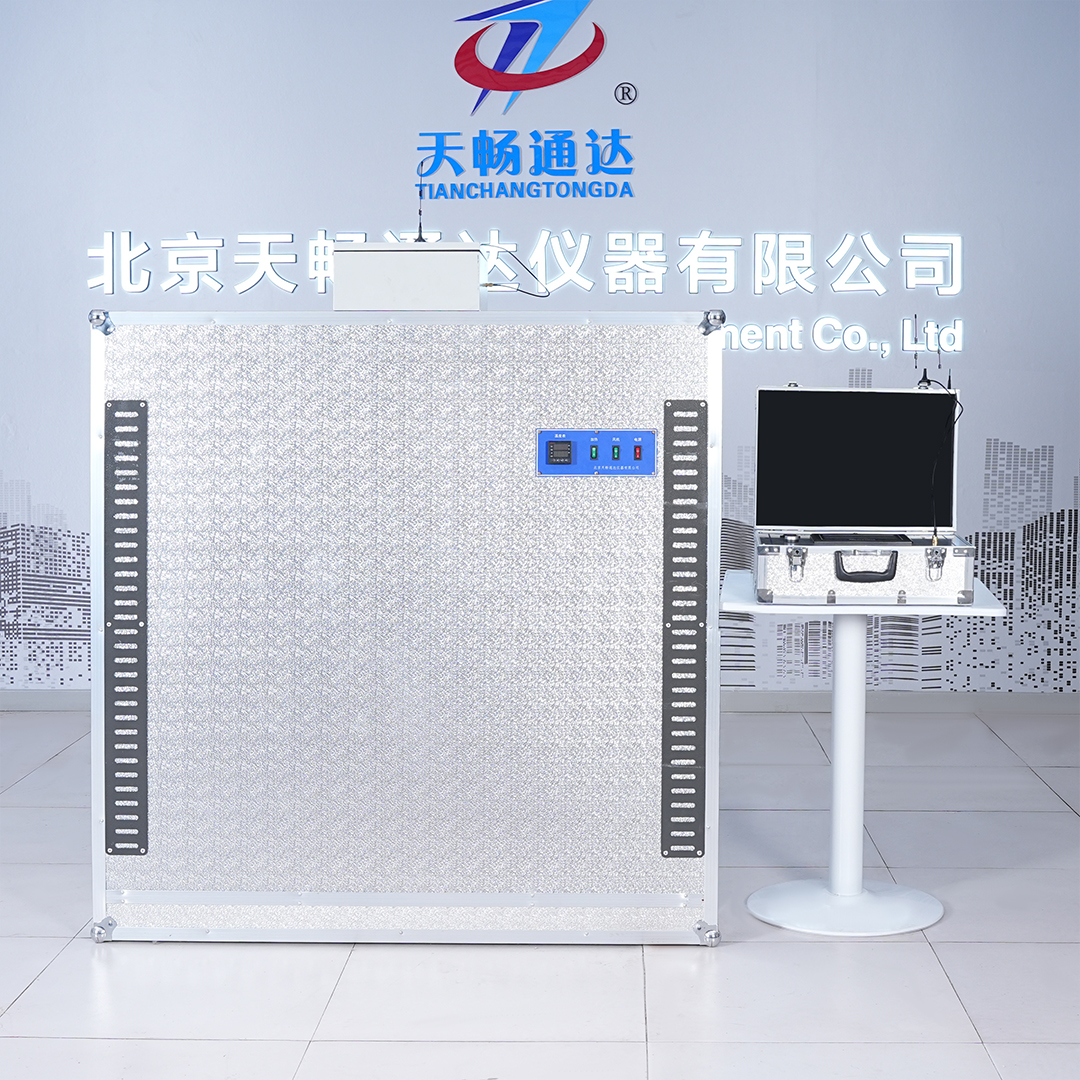TCWH-2 wireless enclosure structure heat transfer coefficient on-site measuring

PIC-(TCWH-2 wireless enclosure structure heat transfer coefficient on-site measuring)
1、 Product Overview
The TCWH-2 wireless building envelope heat transfer coefficient on-site detection instrument is a high-precision and low-power new generation detection instrument developed based on standards such as GB/T23483-2009 "Detection Method for Heat Transfer Coefficient and Heating Capacity of Building Envelope Structures", JGJ/T 132-2009 "Energy Efficiency Inspection Standard for Residential Buildings", and JGJ/T 357-2015 "Technical Regulations for Field Detection of Heat Transfer Coefficient of Envelope Structures", using intelligent touch screens and IoT modules.
This detector measures the temperature difference between the two sides of the specimen by controlling the temperature inside the hot box, and measures it under relatively stable conditions, thereby improving the overall testing accuracy. This detector is suitable for on-site testing and laboratory testing of the heat transfer coefficient of building envelope structures. Calculate the thermal resistance value of the specimen by collecting the heat flux density on the surface of the specimen and the difference in temperature between the inner and outer surfaces. Finally, calculate the heat transfer coefficient.
U has the characteristics of small size, high accuracy, and convenient operation.
In terms of temperature collection methods, especially the collection of external surface temperature, due to the influence of building structure, long-distance wiring and construction are usually required, which is troublesome and costly. This detector adopts wireless communication for the collection of external wall temperature, eliminating the cable connection between the temperature sensor and the detection and collection instrument, thereby simplifying the construction difficulty and avoiding the trouble of wall penetration and wiring caused by communication cables, making the detection more convenient and fast.
U can achieve a communication distance of up to 150 meters (indoor) or 300 meters (open space), and can transmit about 10-15 layers through walls indoors;
U adopts highly intelligent and low-power wireless communication technology, which improves the service life of the battery. Depending on different usage situations, the battery life can reach 2-3 years;
U has the function of power-off retention. Replacing the battery will not affect the test. After replacing the battery, the instrument automatically transmits data and continues the testing process.
2、 Technical parameters
1. Temperature control range of the hot box: 25-50 ℃
Measurement accuracy: 0.25 ℃
Temperature control fluctuation range: soil 0.2 ℃
2. Heat flux density: Range: 0- ± 15mV;
Resolution: 0.001 mV;
Measurement accuracy:< 0.01 mV
The flow density value is determined by the selected heat flux meter;
3. The control box automatically records data, and the sampling time can be set;
4. Wireless communication is used between the external wall wireless temperature acquisition module and the control box, with a maximum communication distance of 150m (indoor) or 300m (open space);
5. Equipped with power: AC 220V, power: 1000W, with good grounding;
6. External dimensions of the hot box equipment: length x width x height (mm)=1320 x 1320 x 300mm.
3、 Layout and quantity of temperature sensors and heat flux density sensors
There are four hot boxes in one trailer, and the number of sensors in each hot box is as follows:
N Hot box:
Inner surface of the specimen:
Temperature sensor: 3 points, used together with 3 heat flux density sensors.
Heat flux density sensor: 3 points, used together with 3 temperature sensors.
Hot box space: 1 point. (Fixed on the deflector screen)
On the outer surface of the test piece, there are three wireless temperature acquisition modules, and each point should be arranged symmetrically with the hot surface.
4、 The composition structure of the detection system
The TCWH-2 building envelope heat transfer coefficient one to four on-site detector consists of a main control box and four heat boxes. From the control box to the hot box
1. Main control box:
The main control box is made of portable aluminum alloy bags, which are easy to carry; And it is equipped with touch screens and wireless receiving modules and other electrical components for real-time temperature and heat flow collection. (As shown in Figure 1).
The control box consists of a temperature module and a wireless transmission module, which can independently control each wall detection heat box.
2. Hot box:
1) Material: It is made of anti rust embossed aluminum alloy plate and high-density PE foam;
2) External dimensions: length x width x height (mm)=1320 x 1320 x 300mm
3) Main components included: The function of the hot box is to simulate the hot side of the specimen and maintain a constant thermal environment inside the box. It is composed of five walls of the box, an electric heater, a fan, a surface temperature sensor, an air temperature sensor, and a heat flux density sensor





















